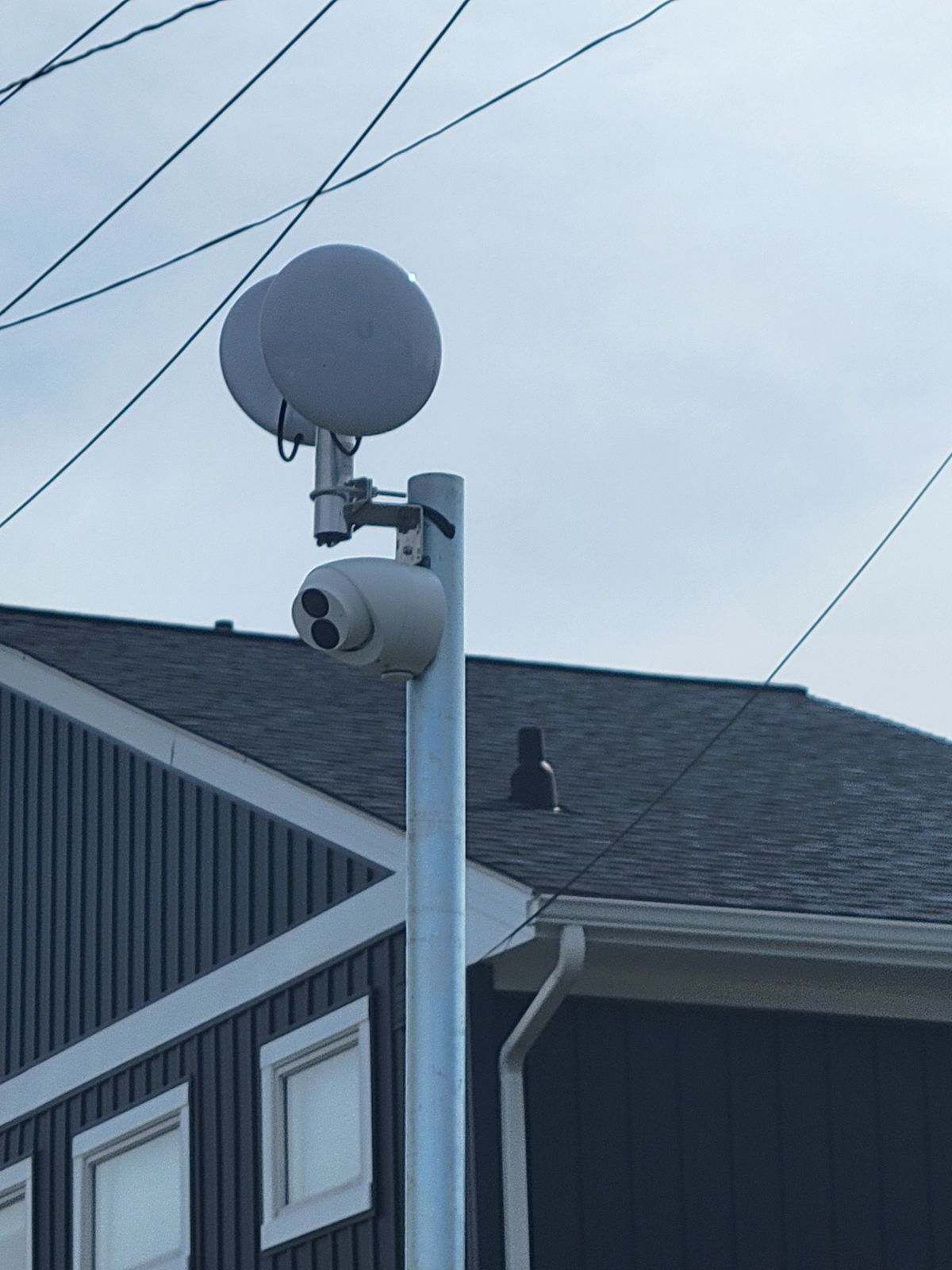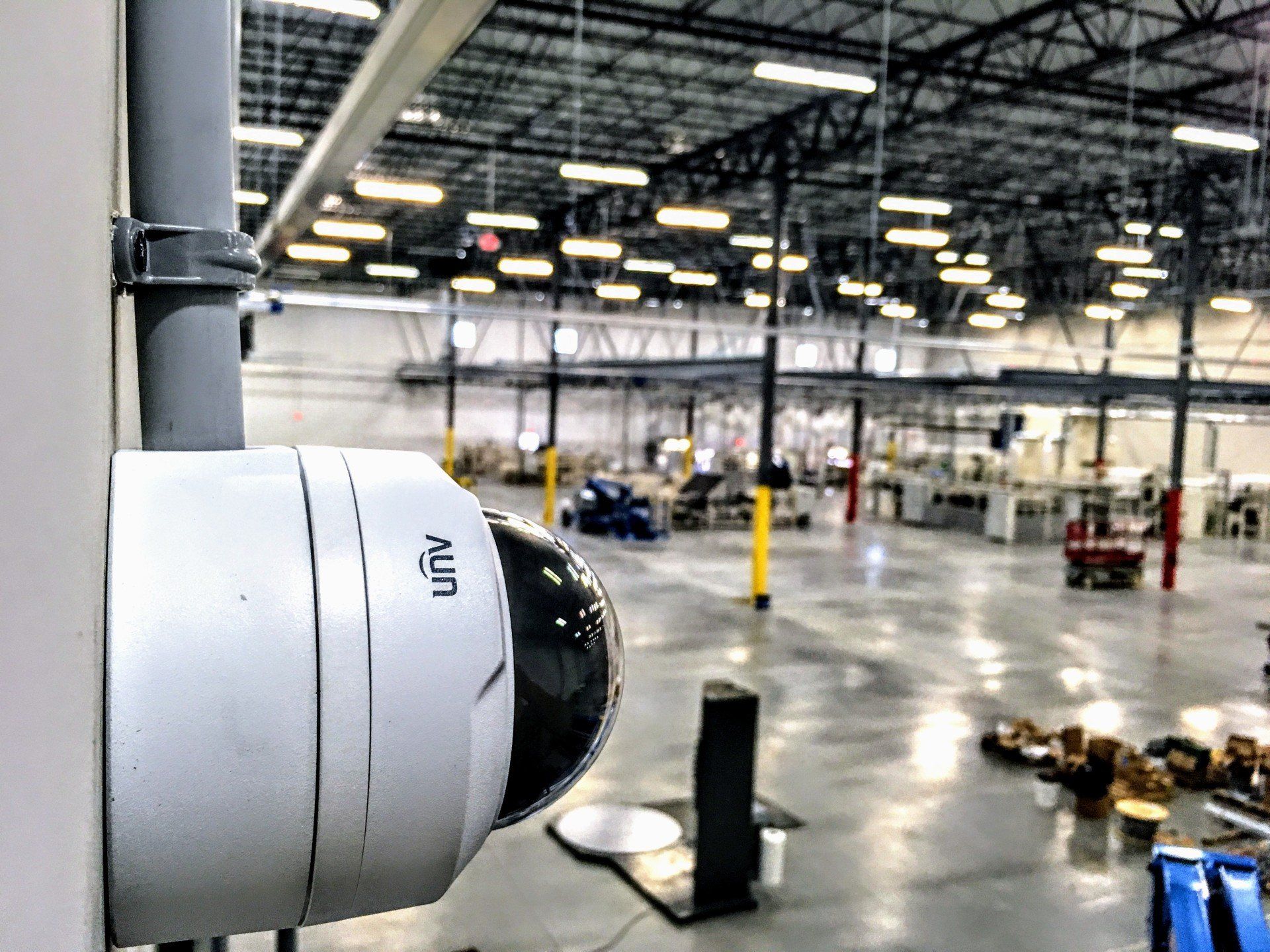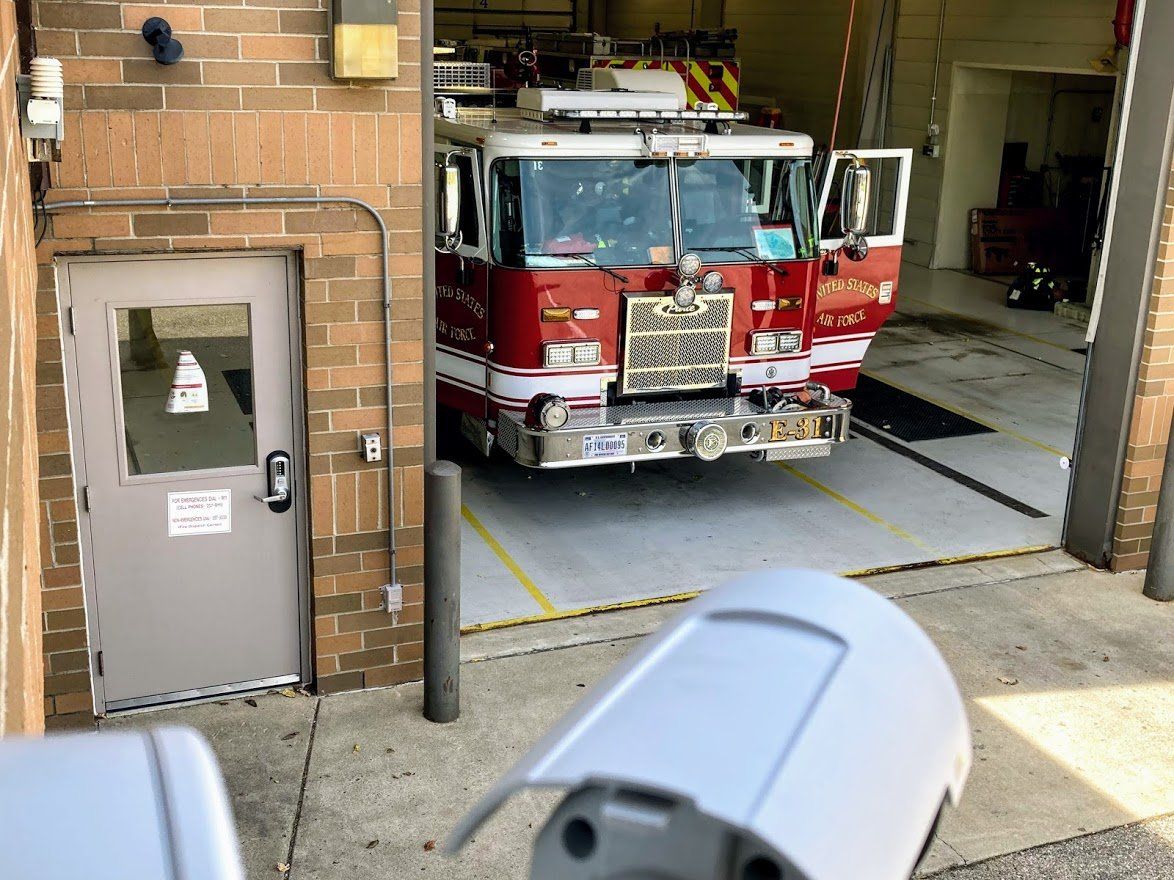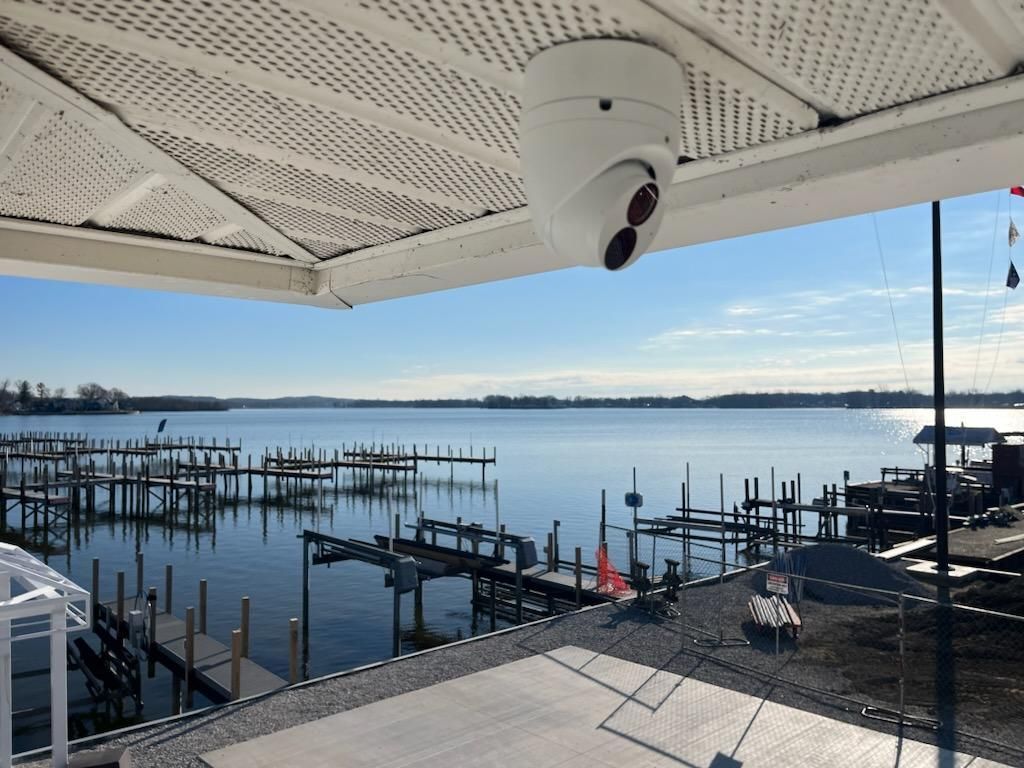Is it Better to Have Wired or Wireless Security Cameras in Ohio?
Introduction
Security cameras are essential for protecting homes and businesses across Ohio. Whether in a bustling city or a quieter rural area, having a reliable security camera system is crucial for safety and peace of mind. Ohio's unique weather conditions—from icy winters to humid summers—also influence the choice of wired or wireless security cameras for your property.
When choosing between the two, consider connectivity, installation, and power requirements. Wired cameras provide a stable connection through physical cabling. In contrast, wireless cameras offer flexibility with a wireless connection, making them suitable for properties where running cables may not be practical. Each option has unique advantages and drawbacks, influenced by factors like video feed stability, installation complexity, and cost.
In this article, we'll explore the factors that can help you decide whether wired or wireless security cameras are better in Ohio.
Table Of Contents:
- Factors to Consider When Choosing Security Cameras
- Technological Advancements in Security Cameras
- Pros and Cons of Wired Security Cameras in Ohio
- DIY Installation vs. Professional Security Camera Installation
- Pros and Cons of Wireless Security Cameras in Ohio
- Battery-Powered Wireless Cameras vs. Wired Power Sources
- Security Camera Compatibility with Ohio Weather Conditions
- Choosing the Right Security Camera for Specific Property Types
- How to Choose the Best Security Cameras for Your Needs
- Considerations for Security Cameras in Ohio
- Environmental Impact and Sustainability of Security Cameras
- Scalability and Expandability
- Common Security Camera Mistakes and How to Avoid Them
- Remote Access and Monitoring Options
- Integrating Security Cameras with Smart Home Systems
- Legal Considerations and Regulations in Ohio
- Upgrading an Existing Security Camera System
- Conclusion: Is It Better to Have Wired or Wireless Security Cameras in Ohio?
Factors to Consider When Choosing Security Cameras
Coverage Area and Surveillance Needs
The size of your property and specific security goals are critical when choosing between wired and wireless security cameras. Larger properties often benefit from wired systems due to their reliable video signals, while smaller spaces may find wireless systems more practical and cost-effective.
Power Source Availability
Wired systems rely on a direct power source, ensuring consistent functionality but requiring physical connections. On the other hand, Wireless cameras often run on rechargeable batteries or a power cord, making them less dependent on fixed outlets but requiring regular battery life monitoring.
Installation and Maintenance Considerations
Wired systems require a more complex installation process, often requiring drilling holes and running cables through walls, which may necessitate professional help. Wireless systems are easier to install and maintain, offering a convenient solution for temporary or flexible setups.
CALL US FOR A FREE QUOTE
Technological Advancements in Security Cameras
The landscape of security cameras is evolving rapidly, driven by advancements in technology like artificial intelligence (AI), machine learning, and edge computing. These innovations enhance the capabilities of both wired and wireless security cameras, offering unprecedented levels of security for homeowners and businesses.
AI-Powered Facial Recognition and Behavioral Analytics
Modern security cameras feature AI-driven facial recognition technology, allowing them to identify individuals in real time. This capability is particularly valuable for businesses managing high-traffic areas or gated communities that require secure access. Behavioral analytics add another layer of sophistication by detecting unusual movements, such as loitering or rapid movement, and triggering alerts to preempt potential threats.
Predictive Alerts and Automated Responses
Machine learning algorithms enable cameras to learn and adapt to their environments. Over time, these systems can identify patterns, such as daily routines or frequently accessed areas, and provide predictive alerts for unusual activities. Combined with automated responses, like activating floodlights or locking doors, these features enhance proactive security.
Edge Computing for Real-Time Processing
Edge computing technology allows cameras to process data locally rather than relying solely on cloud services. This reduces latency, enabling faster responses and reducing the reliance on internet connections—a critical advantage for wired security cameras in rural Ohio or areas with limited bandwidth.
Emerging technologies like these are transforming security cameras from passive monitoring tools into intelligent systems that actively deter threats and streamline security management.
Pros and Cons of Wired Security Cameras in Ohio
Reliability and Stability
Wired security camera systems are known for their reliability. They provide uninterrupted performance and consistent video feed quality, and they are not affected by signal interference from other devices or disruptions in a Wi-Fi connection.
Power and Connection Requirements
These systems depend on a steady power source and physical cabling, which can be advantageous in ensuring stable operation but may be limited in terms of placement flexibility.
Installation Complexity
Wired cameras require more installation, including running ethernet cables and securing cameras to permanent locations. This complexity may lead to higher upfront installation costs and the need for professional assistance.
DIY Installation vs. Professional Security Camera Installation
When setting up a security camera system, choosing between DIY installation and professional services is crucial. Each approach has advantages and challenges.
DIY Installation of Wireless Systems
Wireless security camera systems are designed for user-friendly installation, making them a popular choice for DIY enthusiasts.
- Pros:
- Lower upfront costs with no professional fees.
- Quick setup without requiring specialized tools or skills.
- Flexibility to reposition cameras as needed.
- Cons:
- Limited support for troubleshooting during setup.
- Potential mistakes in placement or configuration, reducing system effectiveness.
Professional Installation for Wired Systems
Wired security cameras often require professional expertise due to their complexity.
- Pros:
- Proper placement and secure physical connections.
- Assurance that all components, including cables and network video recorders, are correctly installed.
- Saves time for busy homeowners or businesses.
- Cons:
- Higher installation costs.
- Dependence on professional schedules for setup.
Cost Breakdown and Tips
- DIY Costs: Lower initial expense, but long-term effectiveness may vary depending on user expertise.
- Professional Costs: Higher upfront investment, but ensures optimal functionality and durability.
To decide which approach is best, consider the system's complexity size and technical confidence.
Pros and Cons of Wireless Security Cameras in Ohio
Flexibility and Ease of Installation
Wireless security camera systems offer unmatched flexibility in placement. They don't require physical connections, making them ideal for properties where wiring is impractical. The lack of cables also simplifies installation, reducing costs and time.
Power Source Options
Wireless cameras can run on rechargeable batteries or be connected to a nearby power outlet. While this makes them more versatile, monitoring battery life becomes essential to ensure uninterrupted operation.
Potential Signal Interference and Range Limitations
Wireless cameras rely on Wi-Fi networks, which can be susceptible to signal interference from other devices. Their range may also be limited, particularly in larger properties or areas with obstructions.
Battery-Powered Wireless Cameras vs. Wired Power Sources
Effectively powering security cameras is crucial for consistent surveillance. Battery-powered wireless cameras and wired power sources each have strengths and limitations.
Battery Life and Recharging Cycles
Battery-powered wireless cameras are celebrated for their flexibility, but their reliance on rechargeable batteries requires regular attention. Modern wireless cameras often feature extended battery life, lasting several months, depending on usage and motion detection activity. However, in high-activity zones, frequent recharging may become necessary.
Performance Differences
Wired cameras, powered through continuous electricity, deliver consistent performance without interruptions. They maintain stable operation regardless of weather conditions or motion activity. In contrast, battery-powered cameras may struggle during prolonged power outages or harsh Ohio winters, as extreme cold can reduce battery efficiency.
Tips for Optimizing Battery Life in Ohio's Climate
- Ohio's Climate: Avoid exposing cameras to extreme temperatures by placing them under eaves or shaded areas.
- Activity Zones: Use motion detection settings to reduce unnecessary recording and preserve battery life.
- Regular Maintenance: Keep batteries charged and consider solar-powered options for outdoor wireless cameras.
Choosing between these power sources depends on your property's specific needs. Solar power offers reliability, while battery-powered cameras provide unparalleled flexibility.
Security Camera Compatibility with Ohio Weather Conditions
Durability and Weather Resistance of Wired Cameras
Wired cameras are typically more durable in extreme weather conditions, as their physical connections are less susceptible to disruptions caused by Ohio's snow, rain, and humidity.
Wireless Camera Performance in Extreme Conditions
Wireless cameras may experience challenges such as reduced battery life in cold weather or signal instability during heavy storms. Proper placement and weatherproof designs are crucial for maintaining their effectiveness year-round.
Choosing the Right Security Camera for Specific Property Types
Selecting the best security camera system depends heavily on the type of property and its unique needs. Tailored recommendations ensure maximum effectiveness and value.
Small Homes
Wireless security cameras are ideal for small homes due to their convenience and ease of setup. Their compact design and wire-free operation make them perfect for limited spaces.
Large Commercial Spaces
Wired security cameras are the better choice for large properties. Their reliability and scalability make them suitable for monitoring expansive areas like warehouses or office complexes. A wired camera system ensures consistent video quality and stable connections, even in high-traffic environments.
Urban vs. Rural Properties
- Urban Properties: Wireless cameras excel in urban settings with robust Wi-Fi networks. Features like remote access and integration with smart home devices make them a practical choice for city dwellers.
- Rural Properties: Wired systems are often preferred in rural areas with unstable internet connections. These systems provide reliable performance regardless of network availability, making them a dependable solution for larger, isolated properties.
By considering property size, location, and specific requirements, homeowners and businesses can choose the most effective security camera system to meet their needs.
How to Choose the Best Security Cameras for Your Needs
Finding the best security cameras for your home or business involves balancing functionality, convenience, and budget. Whether you're considering the best wireless security cameras, the best wired security cameras, or wire-free security cameras, understanding their unique advantages will help you make the right choice.
Best Wireless Security Cameras
Wireless systems are ideal for flexibility and quick setup. They're perfect for those with reliable Wi-Fi and those requiring remote access. Many of the best wireless security cameras now feature extended battery life, motion detection, and integration with smart home devices, making them versatile and user-friendly.
Best Wired Security Cameras
Wired systems stand out for their reliability and high-definition performance. They're ideal for theaters or high-traffic areas where consistent power and stable video feed are essential. The best wired security cameras often include network video recorders for secure, high-capacity storage.
Wire-Free Security Cameras
For maximum portability and ease of use, wire-free security cameras offer a unique solution. They eliminate the need for any cabling, making them a top choice for renters or temporary setups. Many modern wire-free cameras are battery-powered or solar-powered, ensuring functionality in remote locations.
You can ensure optimal security and peace of mind by selecting cameras tailored to your property's needs.
CALL US FOR A FREE QUOTE
Considerations for Security Cameras in Ohio
Upfront Costs of Wired and Wireless Cameras
Wired systems tend to have higher upfront costs due to the need for cables, hardware, and professional installation. Wireless cameras, by contrast, often come with lower initial expenses, particularly for DIY setups.
Long-Term Maintenance and Operating Expenses
While wired systems have fewer recurring costs, wireless systems may require ongoing investments in rechargeable batteries and Wi-Fi network enhancements. Additionally, professional servicing for either system could add to the overall expense.
Environmental Impact and Sustainability of Security Cameras
As sustainability becomes a global priority, eco-friendly security camera options are gaining traction. Solar-powered systems and energy-efficient models now offer environmentally conscious solutions for homeowners and businesses.
Solar-Powered Security Cameras
Solar-powered cameras harness renewable energy to eliminate the need for traditional power sources. These systems are particularly beneficial for outdoor installations in Ohio's rural areas, but Ohio's wired power sources may be difficult to access. Solar cameras reduce electricity consumption and environmental impact by operating independently of the grid.
Energy-Efficient Models
Modern security cameras are designed with energy efficiency in mind. Wired systems now consume less power thanks to technological advancements, while wireless models are increasingly equipped with low-power modes to conserve battery life. Opting for energy-efficient cameras minimizes the environmental footprint and reduces long-term operational costs.
Long-Term Benefits of Sustainable Solutions
- Lower Carbon Footprint: Businesses and homeowners using eco-friendly systems contribute to a healthier planet.
- Cost Savings: While initial investments in solar or energy-efficient cameras may be higher, reduced utility bills and maintenance costs lead to significant savings over time.
- Resilience: Solar-powered cameras offer reliable operation during power outages, making them ideal for emergency preparedness.
Choosing sustainable security cameras aligns with environmental goals and offers financial incentives. They provide peace of mind while supporting eco-conscious living.
Scalability and Expandability
Adding Additional Cameras to the System
When considering scalability, wired systems often pose challenges. Adding cameras to a wired security camera system usually requires running new cables, potentially increasing installation costs and requiring professional help. In contrast, wireless camera systems offer greater flexibility. You can easily integrate several cameras into an existing wireless security system without disrupting the current setup.
Compatibility with Future Upgrades and Advancements
As technology evolves, both wired and wireless security cameras need to adapt. Wireless systems are generally better equipped for updates due to their reliance on software and cloud storage. However, while more stable, wired systems may require upgrades to physical connections like ethernet cables to support advanced features such as night vision or higher video quality.
Common Security Camera Mistakes and How to Avoid Them
Mistakes in selecting, installing, or managing security cameras can compromise effectiveness. Avoiding these pitfalls ensures maximum performance and longevity.
Poor Placement
- Common Issue: Cameras positioned too high, too low, or in areas with obstructions.
- Solution: Place cameras at strategic locations with clear lines of sight to cover entry points and high-traffic areas.
Neglecting Firmware Updates
- Common Issue: Outdated firmware leaves systems vulnerable to cyber threats.
- Solution: Regularly update camera software to access new features and maintain security.
Over-Reliance on Wi-Fi
- Common Issue: Solely using wireless systems without considering signal strength or interference.
- Solution: Invest in Wi-Fi boosters or hybrid systems combining wired and wireless technologies.
Ignoring Environmental Factors
- Common Issue: Using indoor cameras outdoors or failing to weatherproof equipment.
- Solution: Choose cameras rated for outdoor use and place them in protective enclosures if necessary.
Skipping Regular Maintenance
- Common Issue: Cameras with dirty lenses or improperly aligned angles.
- Solution: Perform routine checks to clean, reposition, and test system functionality.
By addressing these common mistakes, homeowners and businesses can optimize their security systems for reliable, long-term operation.
Remote Access and Monitoring Options
Accessing Camera Feeds from Anywhere
Both wired and wireless security camera systems now offer remote access features, allowing users to monitor video feeds via mobile devices or computers. This is especially valuable for homeowners and businesses seeking to oversee their property in real time, even during power outages or traveling.
Mobile App and Cloud Storage Features
Wireless security cameras often include mobile app functionality, making accessing footage from multiple devices easier. Cloud storage options enhance these systems by securely storing video signals offsite, ensuring protection against physical damage. Wired systems are catching up by integrating with network video recorders that support remote access and monitoring.
CALL US FOR A FREE QUOTE
Legal Considerations and Regulations in Ohio
Privacy Laws and Surveillance Restrictions
In Ohio, security camera placement must comply with privacy laws to avoid legal issues. Cameras should not be positioned to invade personal privacy, such as inside bathrooms or directly facing a neighbor's property, to home security cameras and systems used for business surveillance.
Compliance with Local Regulations
Businesses and homeowners must ensure that their wired and wireless security cameras comply with local regulations. For example, public-facing outdoor security cameras may require signage to inform visitors of their presence. Consulting local guidelines helps ensure that these systems are compliant.
Upgrading an Existing Security Camera System
As technology advances, upgrading an outdated security camera system can significantly enhance its effectiveness and usability.
Indicators That It's Time for an Upgrade
- Based on your property's infrastructure's budget, you can prioritize upgrading to high-definition (HD) resolution for improved video quality or opt for a more basic system to reduce costs.
- No night vision or limited low light.
Benefits of Transitioning to Advanced Systems
- 4K Resolution: Upgrading to 4K cameras improves clarity, allowing users to capture finer details such as license plates and faces.
- Wire-Free Convenience: Wireless systems eliminate the need for extensive cabling, simplifying setup and maintenance.
- Smart Features: Modern systems include motion detection, remote access, and integration with smart home devices.
Steps for Replacing and Upgrading Systems
- Evaluate Needs: Determine the areas requiring enhanced security and features.
- Select the Right System: Based on your property's infrastructure's budget, you can choose between wired, wireless, or hybrid systems.
- Professional or DIY Installation: Decide whether to self-install or hire professionals for complex setups.
- Integrate New Features: Ensure the upgraded system includes cloud storage, night vision, and smart home compatibility capabilities.
An upgraded system enhances security and future-proofs your property against evolving threats.
Conclusion: Is It Better to Have Wired or Wireless Security Cameras in Ohio?
When deciding if wired or wireless security cameras are better for your home or business in Ohio, your choice depends on your property's needs and the features you prioritize.
Wired vs. Wireless: The Key Differences
Wired systems provide stable connections, reliable video quality, and uninterrupted performance, making them ideal for properties with a steady power source. These systems are less affected by power outages or signal interference and are often paired with network video recorders for secure storage. However, installation may involve drilling, cabling, and professional assistance.
Wireless systems offer flexibility, quick installation, and modern features like motion detection and remote access. They are ideal for smaller properties or locations where cabling is impractical. While they depend on Wi-Fi, many wireless systems now include long-lasting batteries and solar power options to address power concerns.
Key Considerations
- Property Type: Wired systems suit large or high-traffic properties, while wireless cameras excel in smaller or temporary setups.
- Scalability: Wireless systems allow easier expansion without rewiring.
- Weather Resistance: Choose systems designed for Ohio's varied conditions, including snow and humidity.
Making the Right Choice
Assess your video quality, connectivity, and budget needs to determine the best option for your property. Then, consult a local security expert for personalized recommendations on a system tailored to Ohio's unique requirements.





